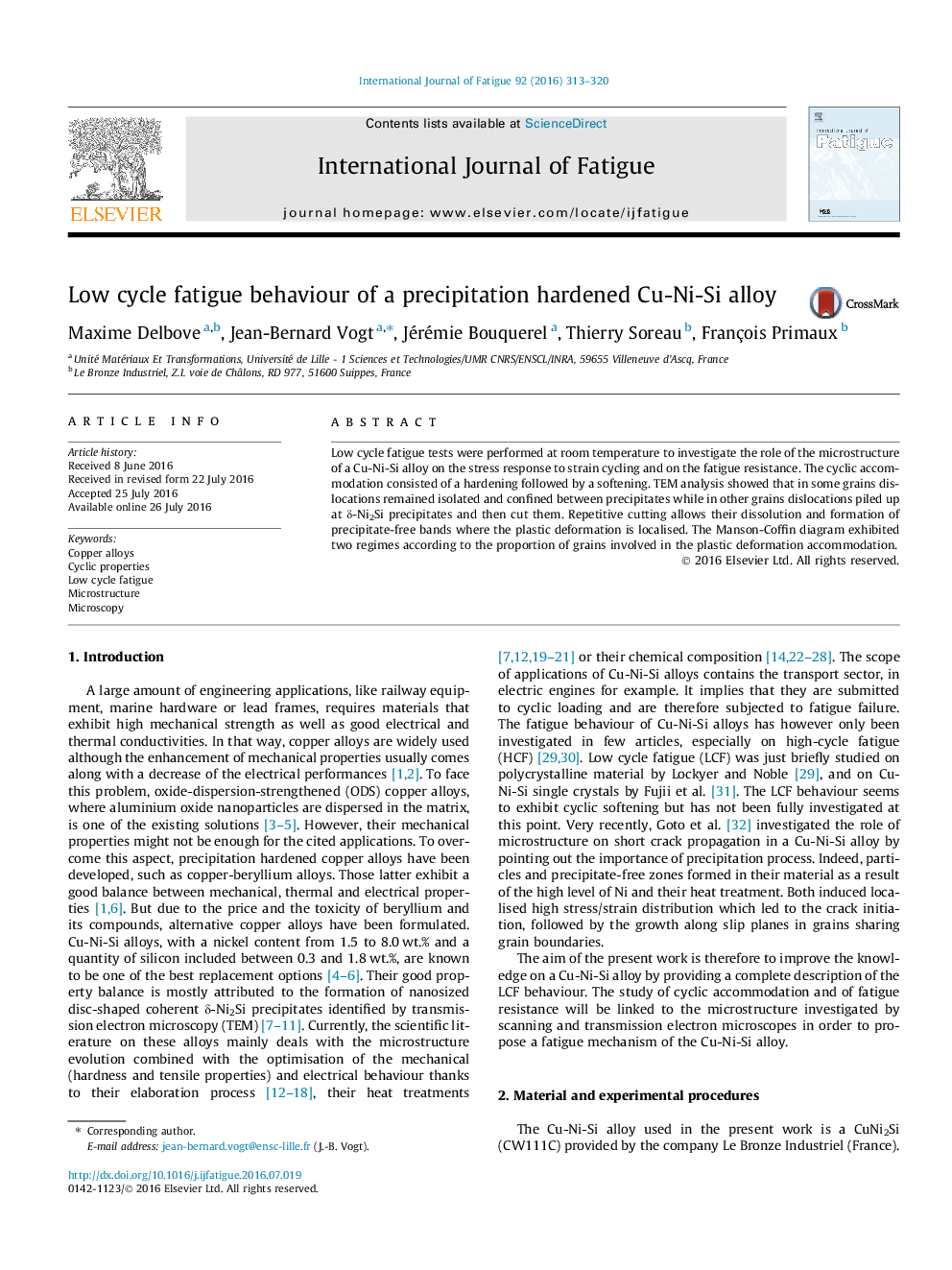| Article ID | Journal | Published Year | Pages | File Type |
|---|---|---|---|---|
| 774783 | International Journal of Fatigue | 2016 | 8 Pages |
•Investigated Cu-Ni-Si contains δ-Ni2Si nano precipitates.•Cyclic hardening followed by softening is observed.•Dissolution of δ-Ni2Si results from repetitive cutting.•Deformation is localised in precipitate-free bands.
Low cycle fatigue tests were performed at room temperature to investigate the role of the microstructure of a Cu-Ni-Si alloy on the stress response to strain cycling and on the fatigue resistance. The cyclic accommodation consisted of a hardening followed by a softening. TEM analysis showed that in some grains dislocations remained isolated and confined between precipitates while in other grains dislocations piled up at δ-Ni2Si precipitates and then cut them. Repetitive cutting allows their dissolution and formation of precipitate-free bands where the plastic deformation is localised. The Manson-Coffin diagram exhibited two regimes according to the proportion of grains involved in the plastic deformation accommodation.
